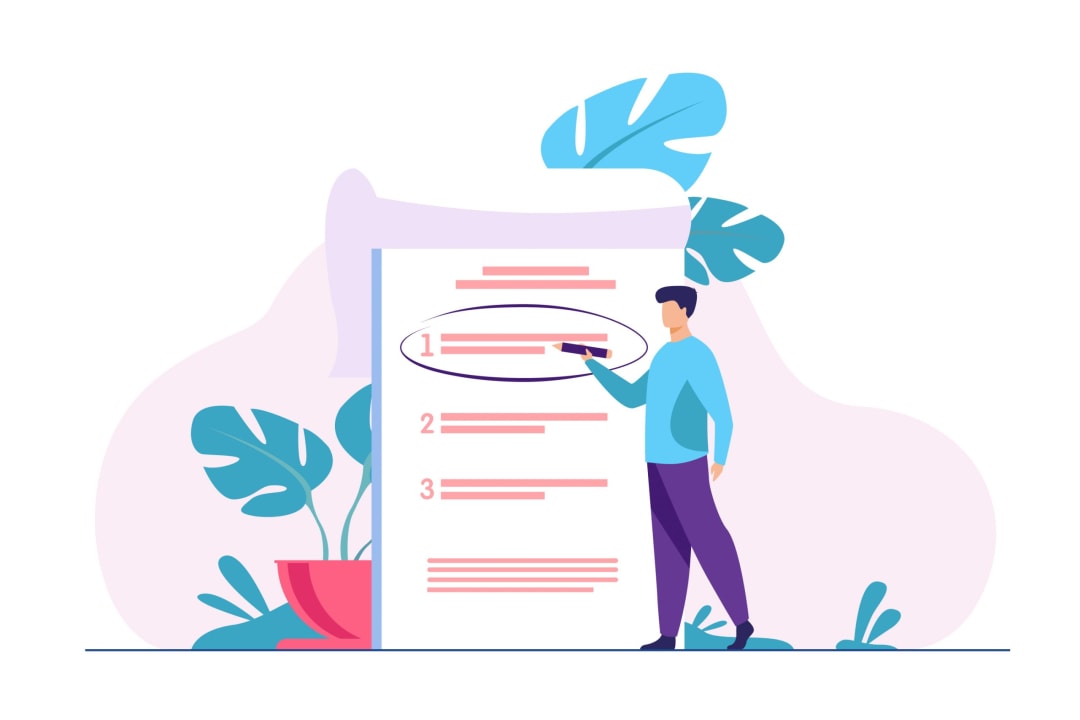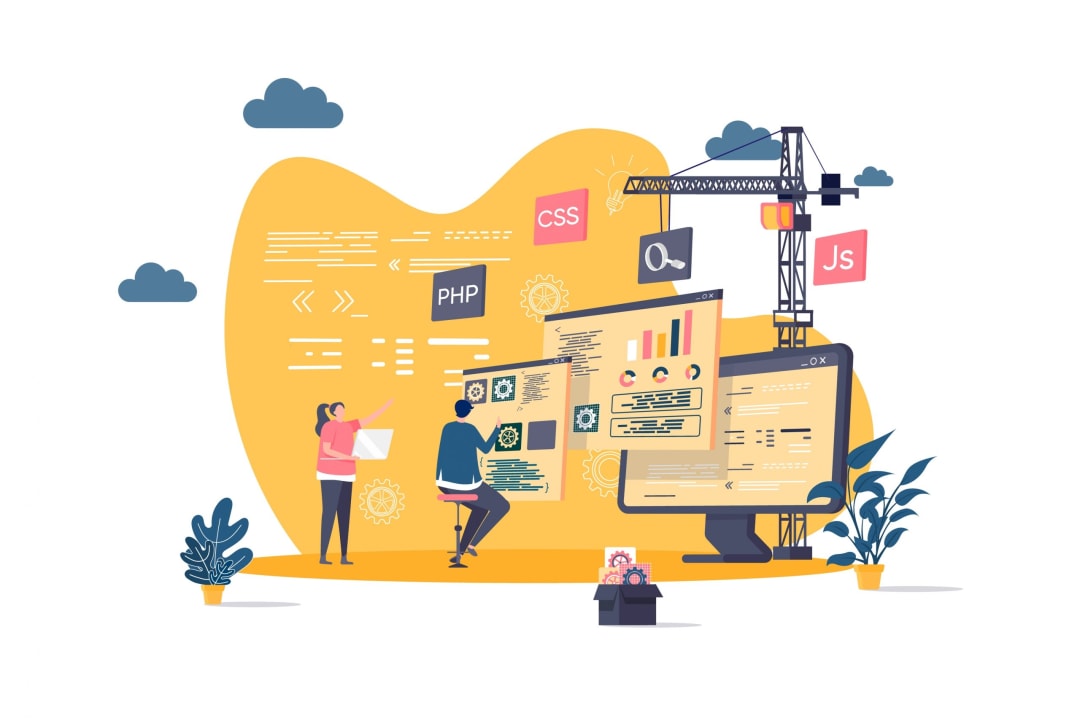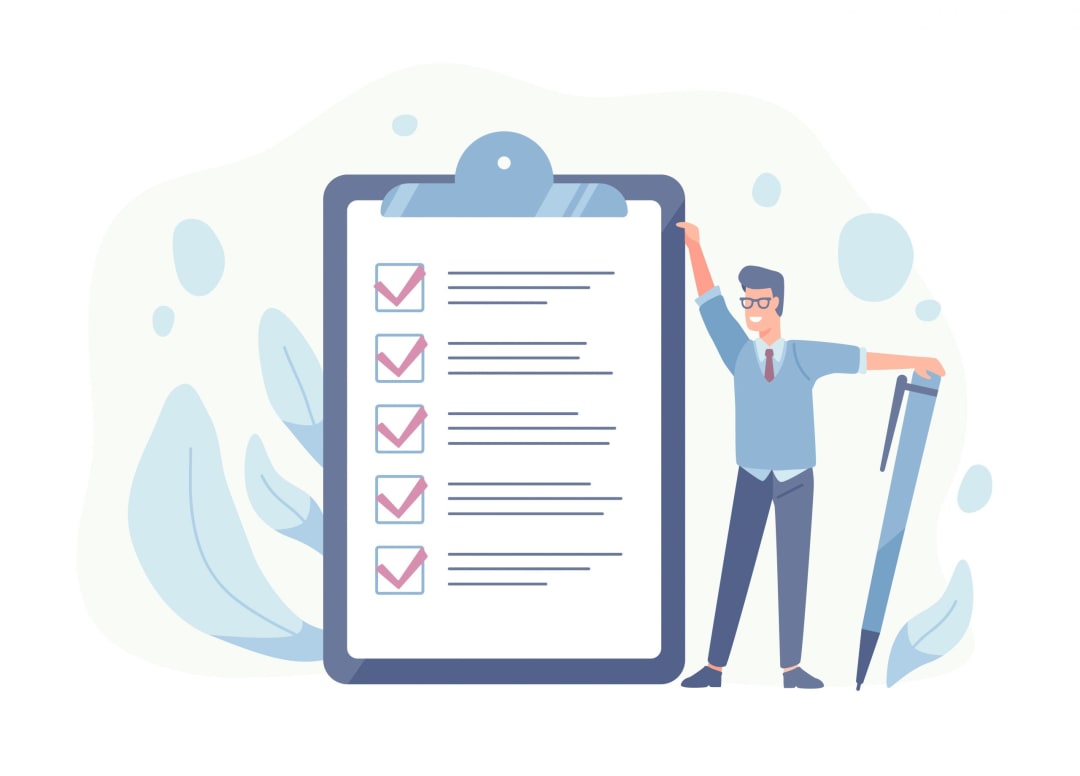7 Awesome Software Engineering Resumes [+ Tips & Templates] was originally published on Springboard.
Scan any job board and you’ll quickly see that there are lots of openings for software engineers. And that’s not going to change any time soon. According to the U.S. Bureau of Labor Statistics, the employment rate for software developers (including engineers) is expected to grow at 22% between 2020 and 2030 compared to 4% for all careers. That’s great news for people who work in software.
But it isn’t enough that the field is in high demand. You want to be among those who go from applying to open software engineering roles to actually landing the job. If that’s your goal, then we have you covered with examples of great software engineering resumes and tips on creating your own.
How Important Is a Software Engineering Resume?

A resume is the first level of screening that any company uses and it’s the stage where the field is pared down the most. The average corporate job opening sees 250 resumes come in but only between 4 and 6 candidates get an interview. So a strong software engineering resume can give you the ability to become part of the top 2% of applicants to a job.
It’s also important to know how recruiters interact with resumes. Studies show that recruiters spend as little as 7.4 seconds on average looking at each resume they receive. That’s how much time you have to make an impression, so clarity and brevity are of the essence.
What Should You Include in Your Software Engineering Resume?

There are a few key pieces of information that you need to mention in your resume. It also matters how you present this information to recruiters. Let’s take a look at the elements that form a winning software engineering resume.
Name and Contact Information
Most of the things you need to mention in this section are obvious. But there are a few nuances to keep in mind with how you present your basic information.
Name
Use the same name that all your other documents, such as your certificates and government IDs, mention. Also ensure that the name you use on LinkedIn corresponds to the one that you have in your resume. You don’t want to confuse recruiters about whether they have the right person’s profile when they look you up online.
Email Address
The email address you mention in your software engineering resume should be professional and ideally include just your name and last name. So don’t use that email ID you made in middle school that was a combination of your favorite band at the time and your birthday. Create a new, simple email ID if you have to so that you can mention it in your resume.
Phone Number
Some recruiters prefer to reach out to candidates via phone call rather than email. So mention your mobile phone number along with your country code, in case you’re applying to a job taking applications from several locations.
Address of Residence
You don’t need to mention your physical address in your resume in most cases. The only reason you might want to have it in there is if recruiters state a preference for people based in a certain area (close to an office, for example). But otherwise, the address is an unnecessary piece of information and shouldn’t take up real estate on your resume.
LinkedIn Profile
A whopping 95% of recruiters use LinkedIn to find or vet talent. Have a link to your LinkedIn profile right next to all your basic contact information so that the people hiring can access it easily. But before you do that, update your LinkedIn and highlight your skills and achievements as a software engineer. Do not link to any other social media profiles on your resume.
Github
If you have a strong Github profile, then include a link to it in your contact information section. Software engineering recruiters like when candidates have contributed to open source projects. It shows that you can work collaboratively and communicate well with others.
Education

Degrees that you’ve earned from universities and certifications from bootcamps or online courses carry weight in the education section. Always mention degrees from any universities you’ve attended first and then move on to bootcamps and MOOCs. Format each entry in the following way:
Degree
The first thing you should mention is the name of the degree you’ve earned, like a ‘Master of Science (M.S.) in Computer Science,’ for example.
School Information
Write the name of the university and where it’s located.
Dates
This is where you mention the duration of the course. Use the same date format that’s followed in the country where the company is located.
Relevant Coursework
This section gives you the opportunity to show that you’ve taken classes that are relevant to the job. Since you’re applying to a software engineering role, some of the classes you can mention include ones that have to do with algorithms, software architecture, programming languages, and machine learning.
Technical Skills

This section of your resume needs to be tailored to the role that you’re applying for. You know that software engineers come in many different forms, like devops engineers, front-end engineers, and security engineers. Read the job description thoroughly and mention only the skills that are relevant to the sub-niche of software engineering that the role deals with.
Let’s say you’re applying to a front-end engineer job. In that case, you’d mention your skills in HTML/CSS, Javascript, front-end frameworks like AngularJS, and responsive design, among other things. Your knowledge of deployment automation or security controls is irrelevant to the role, so you’d leave those out.
Remember that your entire resume plays a role in how recruiters judge your skills as a software engineer. Don’t go too hard in this section and mention too many skills or sell yourself too enthusiastically. Simply group your relevant skills and put them under three categories: expert, advanced, and familiar. This shows recruiters your range of skills and level of proficiency in each skill, which they will appreciate.
Employment History

This is a section for software engineers who’ve already worked in the field. Along with verifiable experience, it’s an opportunity to demonstrate that you’ve meaningfully contributed to business outcomes at other companies. List each of your previous jobs in reverse-chronological order and keep the following things in mind.
Format
Start by writing your job title followed by the name of the company that employed you. In the next line, mention the location of the office you worked at and the span of your employment there.
Quantify Contributions
Always quantify the results that your company was able to see from the work that you did as a software engineer. For example, saying that you “reconfigured the APIs on the checkout page” of a company’s website isn’t very impactful. Stating that you “reconfigured the APIs making calls on the checkout page, thus improving load times by 20%” makes a better impression.
Position
Place the employment history section up top on your resume if you’re a mid- or senior-level software engineer with a lot of relevant experience. The less experienced you are, the lower this section should be positioned on your software engineering resume.
Projects
This section matters more the earlier you are in your software engineering journey. If you’re applying to your first job or switching jobs for the first time, then it helps to list the personal projects and open source contributions you’ve made high up on your resume. It’s evidence of initiative and a passion for the field.
Your personal projects are much less important if you’re a senior software engineer. In that case, you would put the employment history section early in your resume and name only projects that are very relevant to a job you’re applying to.
There are a few key pieces of information to mention when you list a project. That includes:
Title and description
Write the name of the project along with the purpose of the application. For example, you might say, “Android app to track daily calorie intake.” You can hyperlink to a GitHub repo or website if the project has one dedicated to it.
Skills applied
This is where you would list the software engineering skills that came into play when you worked on a particular project along with the tech stack that you used.
Awards and Recognitions

This is the part of the software engineering resume where you get to show off a little bit. It can also catch recruiters’ eyes if you can show that you’ve won awards from well-known organizations or stood at the top of a bootcamp class that’s popular.
Make sure that you’re specific about the awards and certifications you’ve received. “Won the Tech Centre Hackathon,” for example, is low on detail. Instead, you might want to say that you “Placed first in the Tech Centre Hackathon by building an app that sources information on stars visible in the night sky from any given location using the GeoStellar API and the MERN stack.” That gives managers a better idea of what you built and why the recognition is noteworthy.
Software Engineering Resume Examples
Let’s take a look at a few examples of software engineer resumes and assess whether they deliver the goods.
Entry-level Software Engineer
What to Include:

- When you’re an entry-level software engineer, your education history becomes important to recruiters. Mention those details early on in your resume.
- Internships are valuable and you should include information on the companies that you interned with and the projects that you worked on.
- Additional information like online courses completed can help you stand out from the crowd.
We’ve written more about how to craft a great entry-level software engineering resume here.
Example 1:
Source: ResumeLab
This entry-level software engineer resume is easy to scan because of how well-formatted it is. Details regarding the candidate’s academic history, experience, and skills are all neatly laid out. The ‘Experience’ section includes both a junior developer role and an internship, which is a good mix for an entry-level software engineer applying to a job.
One thing to note is that some of the details mentioned in this resume can be more specific. For example, the resume says, “Analysed users’ needs and came up with design software solutions.” But it doesn’t say how the candidate analysed those needs or what quantifiable results the solutions led to. It’s important to include those specifics when talking about the work you’ve done.
Example 2:
Source: Monster
Here we see a resume where the candidate is applying to an “internship or entry-level opportunity.” Now we’ve already run into a small problem. If a recruiter takes a look at this resume, they might be confused whether the candidate is looking for a full-time role or an internship (they’re often hiring for both). They might have additional context from elsewhere, of course, but you don’t want to rely on that.
It’s essential that you tailor every part of your resume for the role that you’re applying to. If you’re applying to an entry-level role, then say that and only that.
Next, we see a section of the resume under the heading “Software Engineering.” For a manager scanning the document, it isn’t instantly clear what that section might be about. This is another source of ambiguity that could lead to your resume not making an impact in the seven seconds that recruiters will give it on average. Title your sections under clear, simple headers such as, “Summary,” “Education,” “Experience,” and “Skills.” It makes things a lot easier for the people who want to glean information from it quickly.
The rest of this resume is clear and easy to comprehend. The candidate has broken down the details of their capstone project into sections about the project scope and tools used. This is a good decision since it clearly conveys what the project was about and the programming languages or frameworks that were used to execute it.
Mid-level Software Engineer Resume
What To Include:
- As a mid-level software engineer, you should highlight your work experience before you get into the education or skills section of your resume.
- Talk about the work you’ve done in terms of the quantifiable results you’ve achieved and business outcomes you’ve helped your company realise.
- Some mid-level engineers have experience leading small teams, but you must list your engineering skills and leadership or soft skills separately.
Example 1:
Source: MintResume
The first thing you’ll notice with this resume is that it mentions work experience first, which is exactly what mid-level engineers should be doing.
But if you take a look at the bullet points under each previous role, you’ll notice that they describe the jobs that the candidate performed without mentioning results. For example, you’ll see phrases like “participated in customer meetings” or “firewall experience support.”
That is not the best way to describe what you did as a software engineer at previous companies. You have to mention what your contribution helped the team achieve and quantify some of your output. So instead of stating that you “authored technical design documentation,” you want to say, “authored engineering documentation references for three processes, thus shortening the learning curve for new team members.”
You’ll also notice that the “Professional Skills” section is a mix of software engineering skills and some soft skills. It is better to put those under their own headers so that recruiters can easily gauge them independently.
Example 2:
Source: Monster
Here’s an example of a mid-level software engineer resume that does a great job of describing professional achievements in a manner that will almost definitely wow recruiters.
Take a look at some of the bullet points under the “Key Accomplishments” subheader. We see examples of results-based, quantifiable contributions made to a company. For example, the candidate says that they corrected a flaw in a CRM, which prevented data loss associated with orders worth more than $150,000. That’s the kind of thing that makes recruiters prick their ears up.
There’s one section in this resume that’s dedicated to testimonials from a supervisor. This is an unnecessary addition in most cases since hiring managers will reach out to your references themselves if they want to hear from them. They can also look up the testimonials on your LinkedIn, which are posted by the people you’ve worked with from their own profiles, and therefore carry greater weight.
Senior-Level Software Engineer Resume
What To Include:
- Recruiters look for software engineers with extensive experience (at least 5+ years) for senior roles, so put your professional history at the top of your resume.
- You need to understand system architecture, data flow, and how to assimilate feedback from multiple stakeholders. Highlight work that you’ve done with large systems and building projects from the ground up.
- Engineers at this level may be working in a leadership position, so mention any experience you have being at the helm of projects.
Example 1:
Source: ResumeKraft
This senior software engineer resume has a section on the candidate’s skills before their experience. You’d want to switch the position of those two sections so that recruiters can quickly get an idea of the work that you’ve done previously. Recruiters favor candidates who have a wealth of experience for senior software engineer roles.
We also see that entries in the “Skills” section are prefixed with qualifiers like “very good experience,” “familiarity with,” and “good knowledge.” A better way to present this information would be to list categories based on level of expertise and group different skills under each one. It could look something like this:
“Familiar with: Heroku, Docker
Experienced with: HTML/CSS, Bootstrap, Git
Very experienced with: C, Matlab, API testing”
Example 2:
Source: ResumeKraft
Here’s an example of a senior software engineer resume that gets almost everything right. The summary section up top quickly conveys that the candidate has 12 years of experience as an engineer. That’s a piece of information that recruiters want quickly and they get just that with this resume.
It then goes on to list work experience that has to do with taking system-level decisions and designing architecture from the ground up, which looks good for senior-level roles. For example, the resume mentions that the candidate “defined the data storage strategy” and “designed the information architecture” for a company. The focus on systems, strategy, and architecture-based experience behoove senior software engineers applying to new jobs.
Also, notice how the personal skills are listed separately from engineering skills. Hiring managers are going to love how they can scan those sections and get a strong idea of what the candidate can do and to what level of proficiency.
Tips for Creating an Awesome Software Engineering Resume
Now that we’ve gone through a few resumes, let’s summarize what constitutes a great resume for a software engineer.
How To Stand Out

1. Summary
A concise summary of what you can bring to the job and company should be at the very top of your resume. Recruiters and employers should be able to tell what your future goals and recent experiences are like by reading it. Remember to drop a few keywords from the job posting in your summary to catch the employer’s attention.
2. Skills
Employers look for people with a specific skill set—fluency in JavaScript or Python, for instance. Think about the projects you’ve done in the past and what kind of technologies you know how to use. Ask yourself if your experiences fit what the employer is looking for. If it’s not an exact fit, are there skills you’ve developed that you can apply to this position?
3. Specific accomplishments
After figuring out what you know, it’s time to discuss what you’ve accomplished specifically. Be as detailed as possible on your resume. List the technologies you’ve used and clients you’ve had, and link to any completed websites or GitHub profiles you’ve created. For instance, don’t just say that you know Python or Java. You should be able to link to examples and discuss projects where you used those languages.
4. Mention your projects
Even if you don’t have relevant work experience, you can talk about your side projects to highlight your creativity and technical expertise. This is particularly important if you have little to no working experience in the field of software engineering. By including your projects, you can highlight the specific skills you used to create them, along with your work ethic, interests, and more.
5. Use keywords
What keywords are in the job post? Note those down and use them on your resume. Mention your technical skills such as Microsoft Office, Oracle, JavaScript, MySQL, CSS, SQL Server, PHP, HTML, NET, Apache, Hadoop, Linux, Unix, jQuery, TCP, j2ee, and others.
6. Use reverse-chronological order
It’s better to use the reverse-chronological format, so potential employers know what your most recent experiences are. If you’re a fresh graduate, start with education first, since you have limited work experience. Talk about what you accomplished during your studies and what you’ve learned. Have you worked on a project with a team or a professor that your employer would be interested in learning about?
What To Avoid

Software engineers tend to make a few common mistakes when crafting their resumes.
1. Too many skills and accomplishments
Only list relevant accomplishments and skills that are mentioned in the job description.
2. Errors
Always proofread and read your resume out loud to make sure there are no run-on sentences, spelling mistakes, or grammatical errors.
3. Poor word choice
Use strong verbs that emphasize your skills and extensive experience. For example, instead of saying you were “responsible” for something, write that you “led” a team or “represented” your company or school at a convention.
This will come in handy if the employer uses the Situation, Task, Action, and Results (STAR) method to quiz you during the interview. In such a situation, you’ll be asked to describe how you solved a problem in the past and what you learned.
You can apply the STAR method to your resume by asking yourself every time you think of including something on your resume: What’s the situation at hand? What action did I take, and what did I learn?
4. Using an illegible font
Stick with one easy-to-read font for the whole resume, 12-point. The titles can be 14 to 16-point. Otherwise, your resume will look messy.
5. Not being flexible about what to include
Even if you’re a career changer who’s never worked in the field, think about how you can use your previous work experience to bolster your resume.
6. Not using the PDF format
Unless indicated otherwise, send your resume as a PDF.
Where To Find Software Engineering Templates
Software Engineering Resume FAQs
Should You Customize Your Resume for Each Job?
Yes, you should customize each software engineering resume you send out based on the specifics of the role that you’re applying to. Make sure to mention your experience with the specific technologies and frameworks listed in the job description. Firing off a generic resume for every job simply won’t cut it with hiring managers.
How Long Should a Software Engineering Resume Be?
Your resume should be at most two pages long. If you’re applying to an entry-level software engineering role, then stick to a single page. If you’re a more experienced software engineer, then you’re allowed to fill out two pages. But no more than that.
Ready to switch careers to software engineering?
Springboard offers a comprehensive software engineering bootcamp. You’ll work with a one-on-one mentor to learn key aspects of front-end web development, back-end web development, databases, and data structures and algorithms. Modules include learning resources, practice exercises, projects, and career-related coursework.
Check out Springboard’s Software Engineering Career Track to see if you qualify.
Not quite ready to dive into a software engineering bootcamp
Springboard also offers a Software Engineering Prep Course, where you can learn the foundational web development skills (HTML, CSS, and JavaScript) needed to pass the technical skills survey for the Software Engineering Career Track.
The post 7 Awesome Software Engineering Resumes [+ Tips & Templates] appeared first on Springboard Blog.


